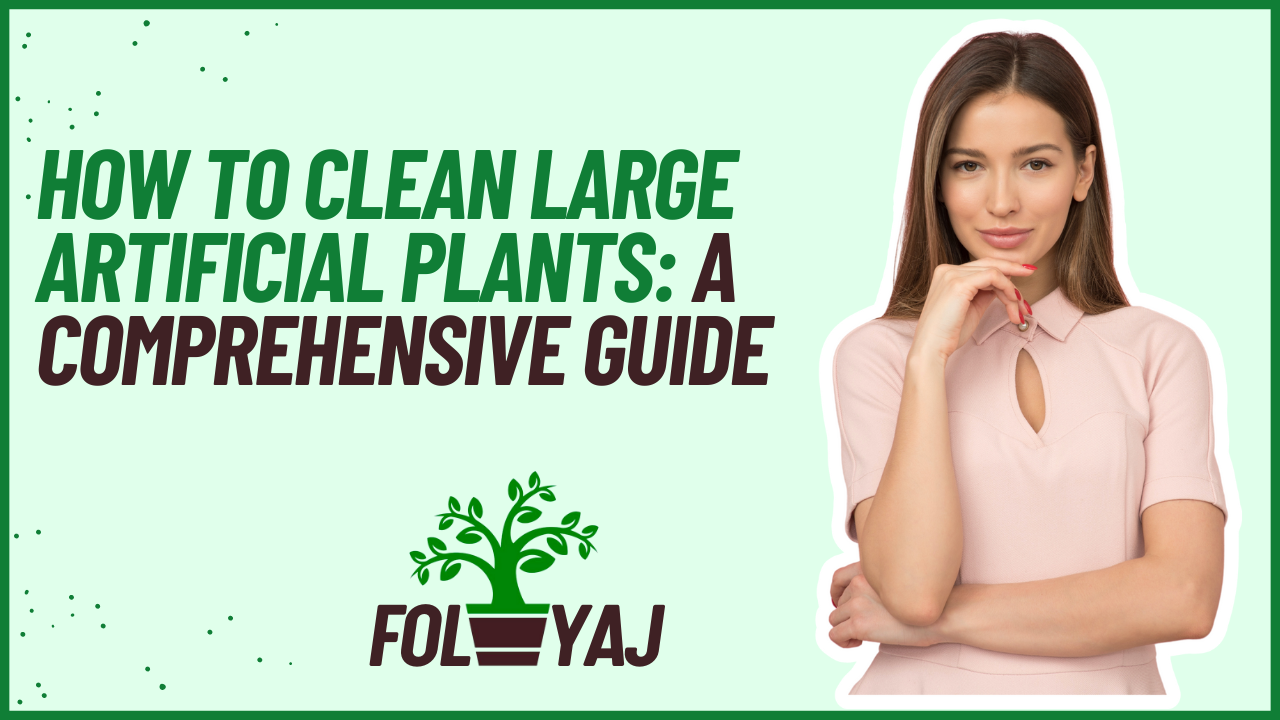
How to Clean Large Artificial Plants: A Comprehensive Guide
Are you struggling to keep your large artificial plants looking fresh and vibrant? You’re not alone. Many homeowners and office managers grapple with maintaining the beauty of these statement pieces. In this comprehensive guide, we’ll explore effective techniques for cleaning large artificial plants, ensuring they remain stunning focal points in your space.
Large artificial plants are popular home decor plants that add a touch of nature to any room without the hassle of daily care. However, they do require occasional cleaning to maintain their lifelike appearance. Whether you have towering faux trees or expansive artificial foliage, this article will equip you with the knowledge to keep them looking their best.
The Importance of Clean Artificial Plants
Before we dive into the cleaning methods, let’s understand why maintaining clean artificial plants is crucial:
-
Aesthetic appeal: Clean plants enhance the overall look of your space.
-
Improved air quality: Dust-free plants contribute to a healthier environment.
-
Longevity: Regular cleaning extends the life of your artificial plants.
-
Cost-effective: Proper maintenance reduces the need for frequent replacements.
Assessing Your Artificial Plants
Types of Large Artificial Plants
Large artificial plants come in various forms:
-
Floor plants
-
Hanging plants
-
Wall-mounted greenery
-
Artificial trees
Each type may require slightly different cleaning approaches, which we’ll explore in detail.
Materials Used in Artificial Plants
Understanding the materials of your plants is crucial for choosing the right cleaning method:
-
Silk
-
Polyester
-
Plastic
-
Blend of materials
H2: Essential Tools for Cleaning Large Artificial Plants
To effectively clean your large artificial plants, you’ll need the following tools:
-
Soft-bristled brush or duster
-
Microfiber cloths
-
Vacuum cleaner with brush attachment
-
Spray bottle
-
Mild dish soap
-
White vinegar
-
Compressed air canister (optional)
Having these tools on hand will make the cleaning process much smoother and more efficient.
Step-by-Step Cleaning Process
Dry Cleaning Methods
-
Dusting:
-
Use a soft-bristled brush or duster to gently remove loose dust and debris.
-
Work from top to bottom to avoid redistributing dust.
-
-
Vacuuming:
-
Attach the brush nozzle to your vacuum cleaner.
-
Carefully run the vacuum over the leaves and stems, being gentle to avoid damage.
-
-
Compressed Air:
-
For hard-to-reach areas, use a can of compressed air to blow out dust.
-
Hold the can upright and spray in short bursts to avoid moisture buildup.
-
Wet Cleaning Methods
-
Spot Cleaning:
-
Mix a small amount of mild dish soap with warm water.
-
Dip a microfiber cloth into the solution and gently wipe affected areas.
-
Rinse with a clean, damp cloth and pat dry.
-
-
Full Plant Cleaning:
-
For heavily soiled plants, create a cleaning solution of 1 part white vinegar to 3 parts water.
-
Fill a spray bottle with this mixture.
-
Lightly mist the entire plant, focusing on problem areas.
-
Wipe down with a clean, damp microfiber cloth.
-
Allow the plant to air dry completely.
-
Special Considerations for Different Materials
Silk Plants:
-
Use extra caution when cleaning silk plants, as they are more delicate.
-
Avoid excessive moisture, which can damage the fabric.
-
Consider using a silk plant cleaning spray for best results.
Plastic Plants:
-
These are the most durable and can withstand more rigorous cleaning.
-
You can use a slightly stronger cleaning solution if needed.
Mixed Material Plants:
-
Identify the different materials in your plant and clean each section accordingly.
-
Be mindful of joins and seams where dust may accumulate.
Maintaining Your Clean Artificial Plants
After thoroughly cleaning your large artificial plants, implement these maintenance tips to keep them looking fresh:
-
Regular dusting: Incorporate dusting your plants into your weekly cleaning routine.
-
Strategic placement: Position plants away from high-traffic areas to reduce dust accumulation.
-
Rotate plants: Occasionally rotate your plants to ensure even exposure and prevent dust buildup on one side.
-
Use air purifiers: Reduce overall dust in your space with air purifiers.
While these tips focus on large artificial plants, many of these techniques can be adapted to maintain mini fake plants as well. The principles of gentle cleaning and regular maintenance apply across all sizes of artificial greenery.
Troubleshooting Common Issues
Stubborn Stains:
-
For tough stains, create a paste using baking soda and water.
-
Gently apply the paste to the stain, let it sit for a few minutes, then wipe clean.
-
Always test on a small, inconspicuous area first.
Faded Colors:
-
If your plants look dull after cleaning, consider using a plant rejuvenation spray.
-
These products can restore shine and vibrancy to faded artificial foliage.
Bent or Misshapen Parts:
-
Gently reshape leaves or stems using your hands.
-
For more stubborn bends, use a hairdryer on low heat to soften the material before reshaping.
Professional Cleaning Services
For those with extensive collections of large artificial plants or limited time, professional cleaning services are available. These experts have specialized tools and techniques to deep clean and restore your artificial plants to their original beauty.
Consider professional cleaning:
-
Annually for high-quality, expensive plants
-
Bi-annually for plants in high-traffic or dusty areas
-
When preparing for special events or home staging
Environmental Considerations
When cleaning your large artificial plants, it’s important to consider the environmental impact of your methods:
-
Use eco-friendly cleaning products when possible.
-
Opt for reusable microfiber cloths instead of disposable wipes.
-
Consider collecting and reusing the water used for cleaning, especially if you have real plants that need watering.
By making these small adjustments, you can maintain your artificial plants while minimizing your environmental footprint.
The Future of Artificial Plant Maintenance
As technology advances, we’re seeing new innovations in the world of artificial plants:
-
Self-cleaning coatings that repel dust and stains
-
UV-resistant materials that maintain color for longer
-
Smart artificial plants that monitor air quality and adjust their appearance accordingly
While these technologies are still developing, they promise to make maintaining large artificial plants even easier in the future.
Conclusion
Cleaning large artificial plants may seem daunting, but with the right techniques and tools, it’s a manageable task that yields beautiful results. Regular maintenance not only enhances the appearance of your space but also protects your investment in these decorative pieces.
Remember, the key to successfully cleaning large artificial plants lies in gentle, consistent care. By following the steps outlined in this guide, you’ll be able to keep your artificial greenery looking lush and lifelike for years to come. So, roll up your sleeves, gather your cleaning supplies, and give your large artificial plants the refresh they deserve. Your revitalized space will thank you!


